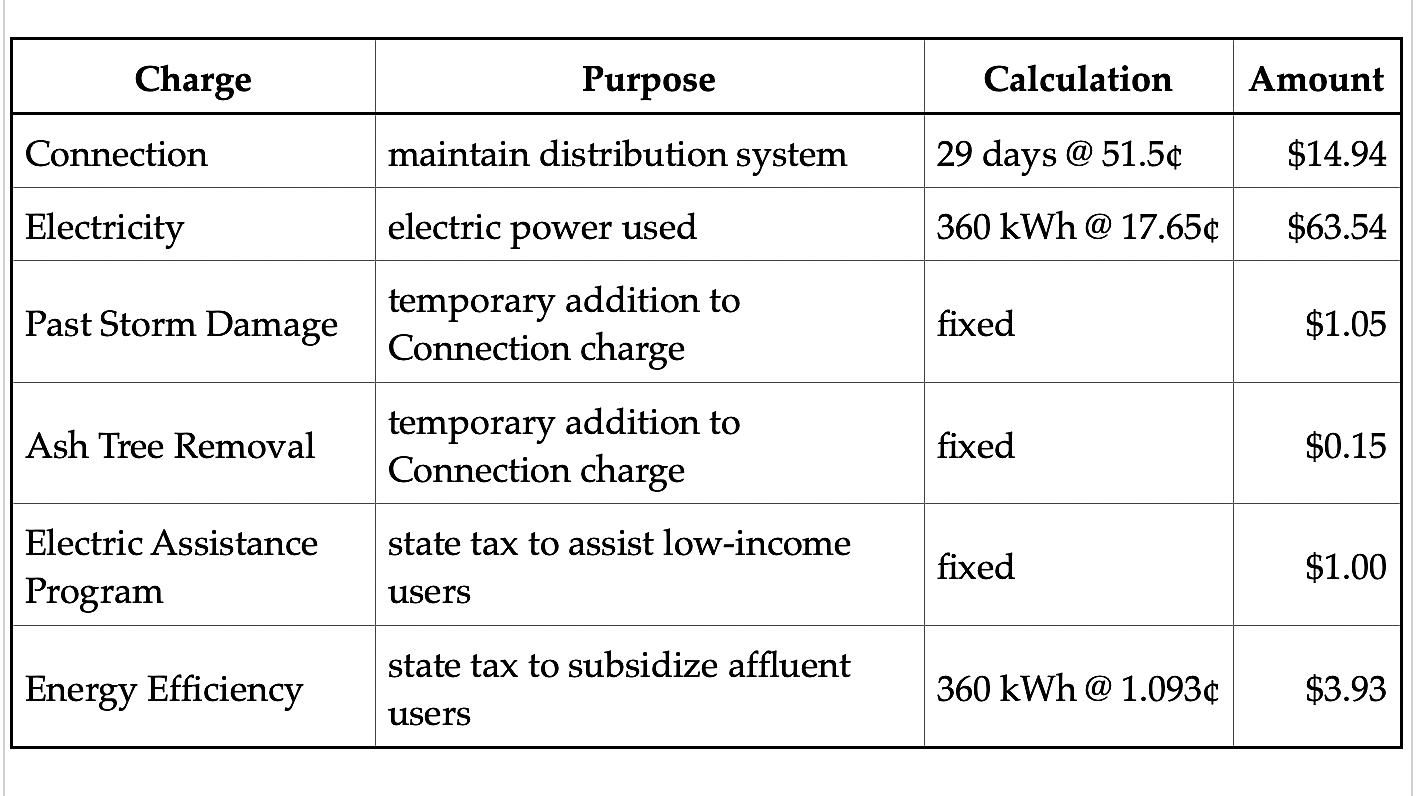George Angwin, 16 March 2022
Many news reports compare electricity rates in different parts of the United States and other countries. I find these comparisons suspicious because of the ambiguities in the term "electricity rates". My February electricity bill illustrates these ambiguities. The table shows the break out of charges. The total bill is $84.61 for 360 kWh of electricity, which amounts to 23.50¢/kWh. Now let’s look at the charges in more detail.
The price of electricity is commonly reported as 17.65¢/kWh, as shown in the second line of the table. This figure includes only the charge for kWh used, omitting charges for delivery. It is as though a restaurant were to advertise prices that cover only the cost of buying and preparing the food, omitting the cost of delivery, which consists of the labor involved in serving it, the building, and the equipment.
The first 4 charges are the actual charges for electricity and its delivery; they sum to $79.68, for a rate of 22.13¢/kWh. The two temporary charges are probably permanent, morphing into charges with different names. Green Mountain Power will not lightly give up a revenue source.
The last two charges in the table are actually taxes imposed by the state of Vermont. It appears that GMP is a tax-collection arm of the state government. I am uneasy with this connection.
The Electric Assistance Program offers a 25% discount on electricity bills to low-income people. Green Mountain Power administers this program, but the state specifies its administration and eligibility.
The Energy Efficiency tax funds a non-profit organization that tests homes for energy leakage and subsidizes improvements such as extra insulation and better windows. The subsidy covers a large portion of the cost of the tests and improvements. This is a regressive tax, as is any tax on an essential service or good.
The Electricity charge hides another subsidy for the affluent — net metering. Some people install solar panels that are connected so that the electricity generated can flow either to the grid, like from a power plant, or to their household, replacing electricity from the grid. When the installation supplies electricity to the grid, the owner gets paid a few cents more than the retail rate, which where I live is 17.65¢/kWh. The wholesale rate GMP pays for electricity from the grid is generally in the neighborhood of 5¢/kWh. The rest of GMP’s customers pay the roughly 15¢/kWh difference required to pay for net metered power. The result of net metering is that those who do not have such solar panel installations subsidize the electricity of those who can afford them.
Depending on your idea of electricity rate, you could say I paid 17.65¢, 22.13¢, or 23.50¢ for each kWh, or some other rate calculated from a deeper analysis of the charges in my bill. This analysis of my electricity bill summarizes one aspect of the insanely complicated system of generating and delivering electricity. For a deeper dive into it, I recommend reading Shorting the Grid by Meredith Angwin. Her book is still not the whole story, but it is a very readable (some reviewers say a "page turner") exposition of the essentials of the electric grid.
Crescat scientia, vita excolatur.
